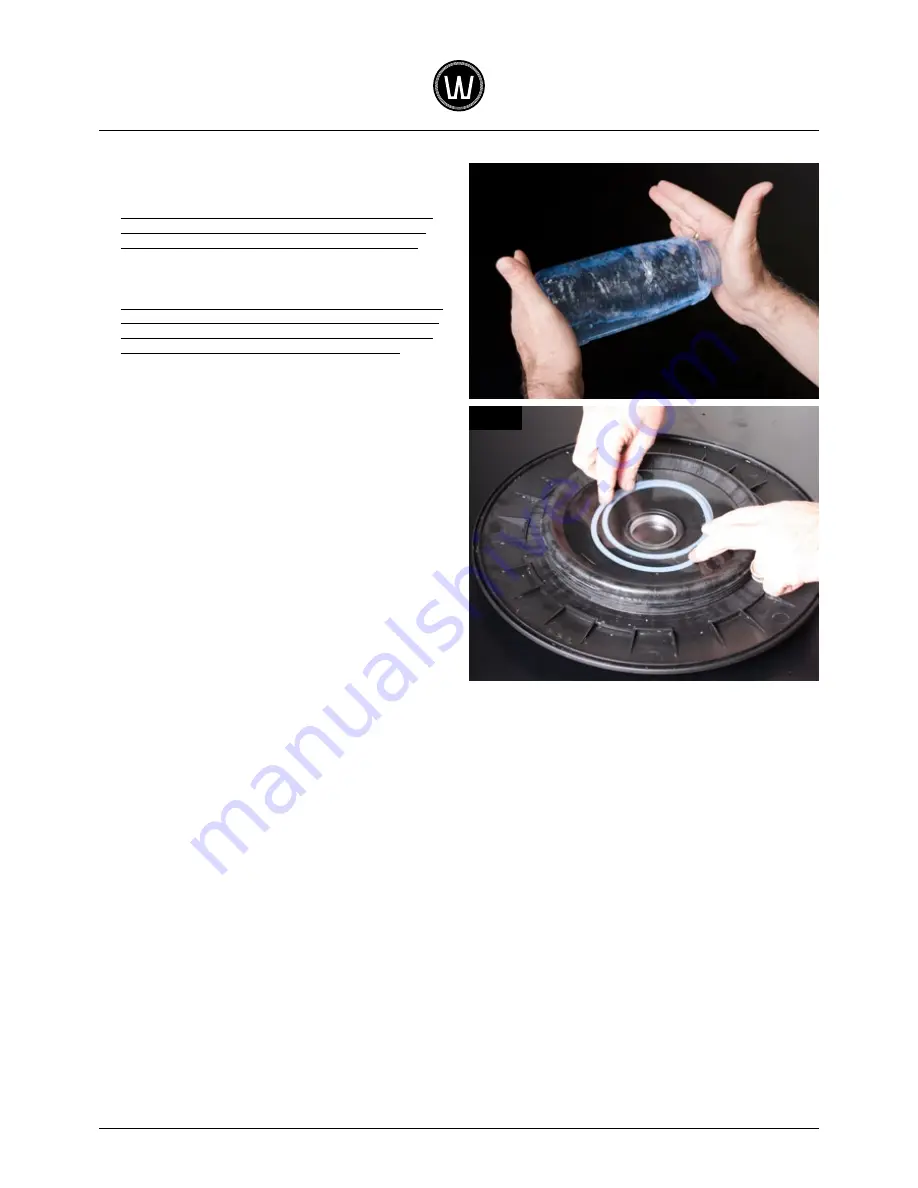
23
28. Put the 2 Litre jug under the draft tap and open the tap to
remove any remaining sanitising solution from that line
too. Close the draft tap when CO
2
is being emitted. Again,
it is critical to be sure the draft tap is closed and holding
the pressure and no gas is being emitted, so as to avoid
beverage leaking out the draft tap during fermentation.
Keep the sanitizer in the jug, do not dump it down
the drain.
29. Then push the draft tap flow control lever all the way up so
to close this. This is important as it is an additional safety
closure that will help ensure no beverage leaks out of the
draft tap as the pressure rises during fermentation.
30. Check the 3-way valve is in the closed position and then
remove all pressure from the vessel again by pushing the
button on the variable pressure relief valve (VPRV) (see
Figure 8). Release the button when the vessel pressure gauge
on the control panel reads 0 and no gas is being emitted.
Then remove the vessel lid (it screws off counter-clockwise).
31. Put the 2 Litre jug under the vessel valve, open the vessel
valve and drain any remaining sanitizer from the vessel.
Close the vessel valve.
32. Take the approximately 400ml of sanitizer that is now in the
jug and pour it into the sediment bottle. Put your hand over
the end of the sediment bottle and shake the bottle for 1
minute to get all internal surfaces wetted with sanitizer (See
Figure 25). If you prefer not to get sanitising agent on your
hands use a glove or just swirl the sanitizer to wet all the
surfaces.
33. Then pour the sanitizer from the sediment bottle into the
upside vessel lid on a table so that the internal lid surface
can also soak with sanitizer. Rinse the sediment bottle well
with water to remove all sanitizer and put it on the table.
Then swirl the upside-down lid gently so that the sanitizer
can wet all surfaces and parts of the lid thread. Take
the seal out of the vessel seal groove and place it in the
sanitizer in the upside down lid. Let the lid and seal soak
in the sanitizer (see Figure 26).
34. Put the empty jug under the vessel valve and open the
vessel valve to remove any final residual sanitizer. Close
the vessel valve and dump any residue in the jug down
the drain and rinse the jug well to remove all sanitizer.
35. Let the upside-down lid and seal soak in sanitizer until
required in the next stage involving adding the ingredients.
If you are cleaning the brewery but not going to make
another brew right now, then after the lid and seal have
soaked for 1 minute, put the seal back in its grove on
the vessel rim. Then dump the sanitizer from the upside
down lid and put it back on the brewery. There is no need
to rinse the lid.
THE BREWERY IS NOW CLEANED AND SANITISED AND
READY FOR THE ADDITION OF INGREDIENTS.
You do not need to rinse the sanitizer off the vessel walls. As
explained in Appendix 1, we are using a no-rinse sanitizer.
Fig. 25
Fig. 26
















































